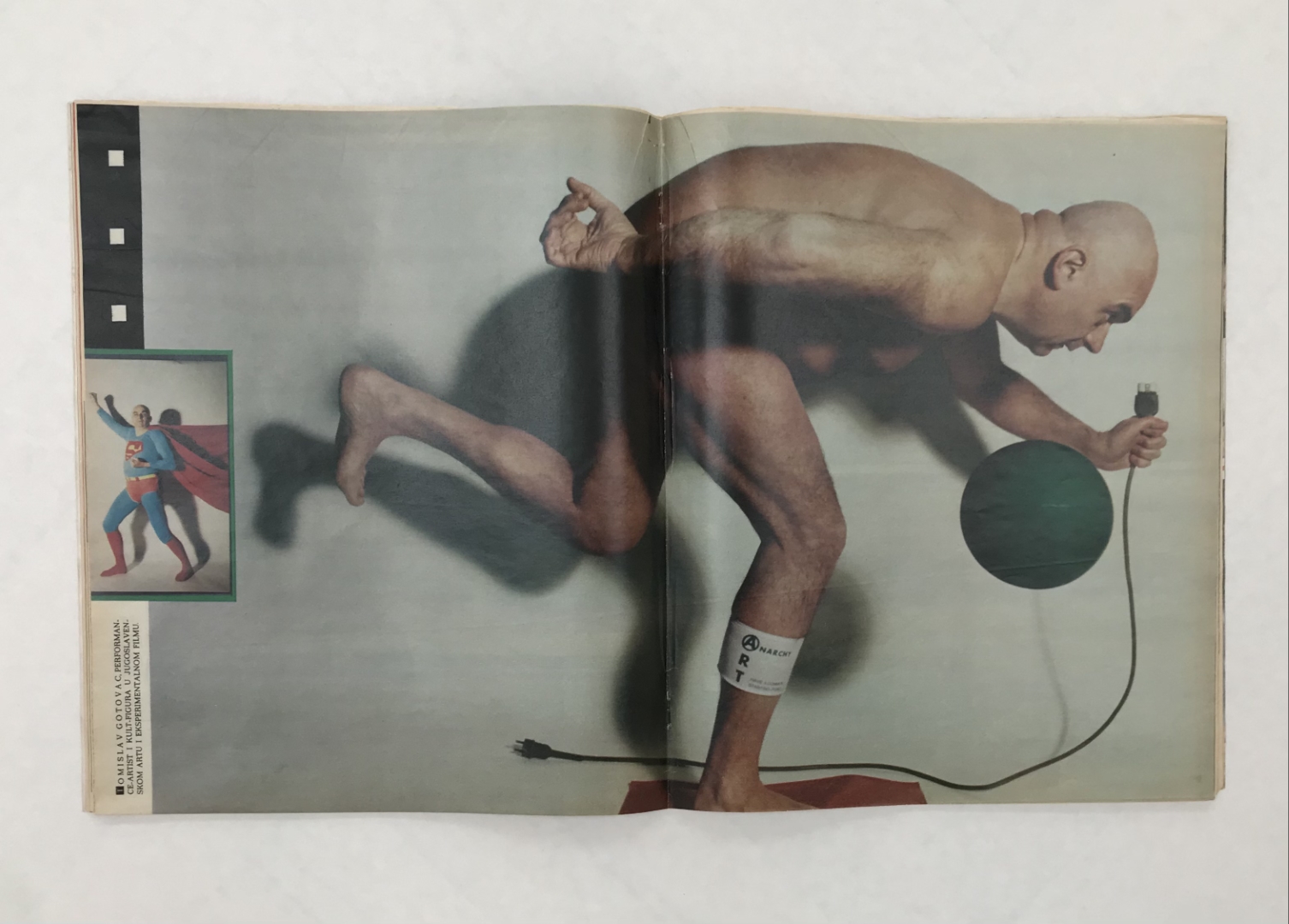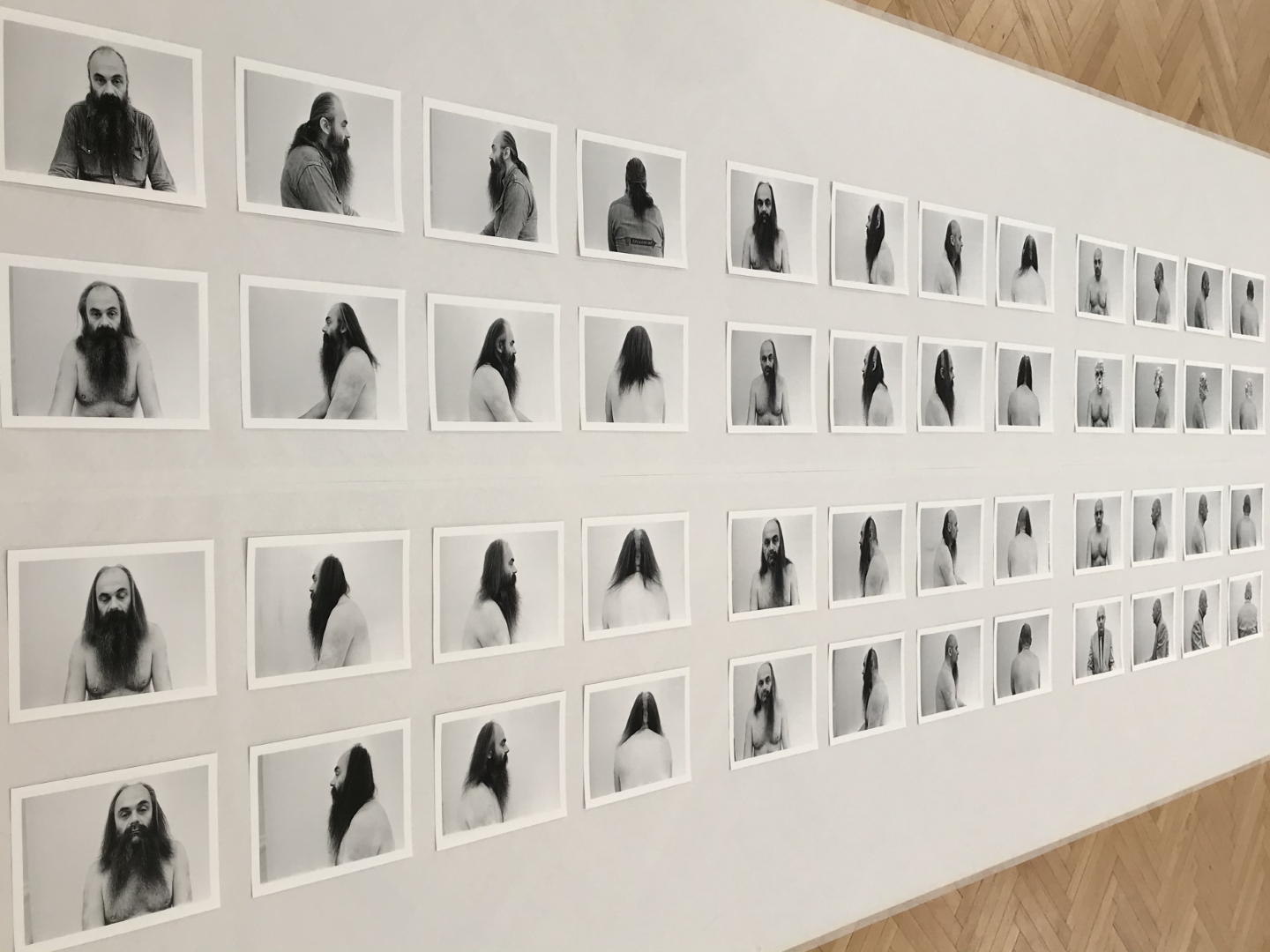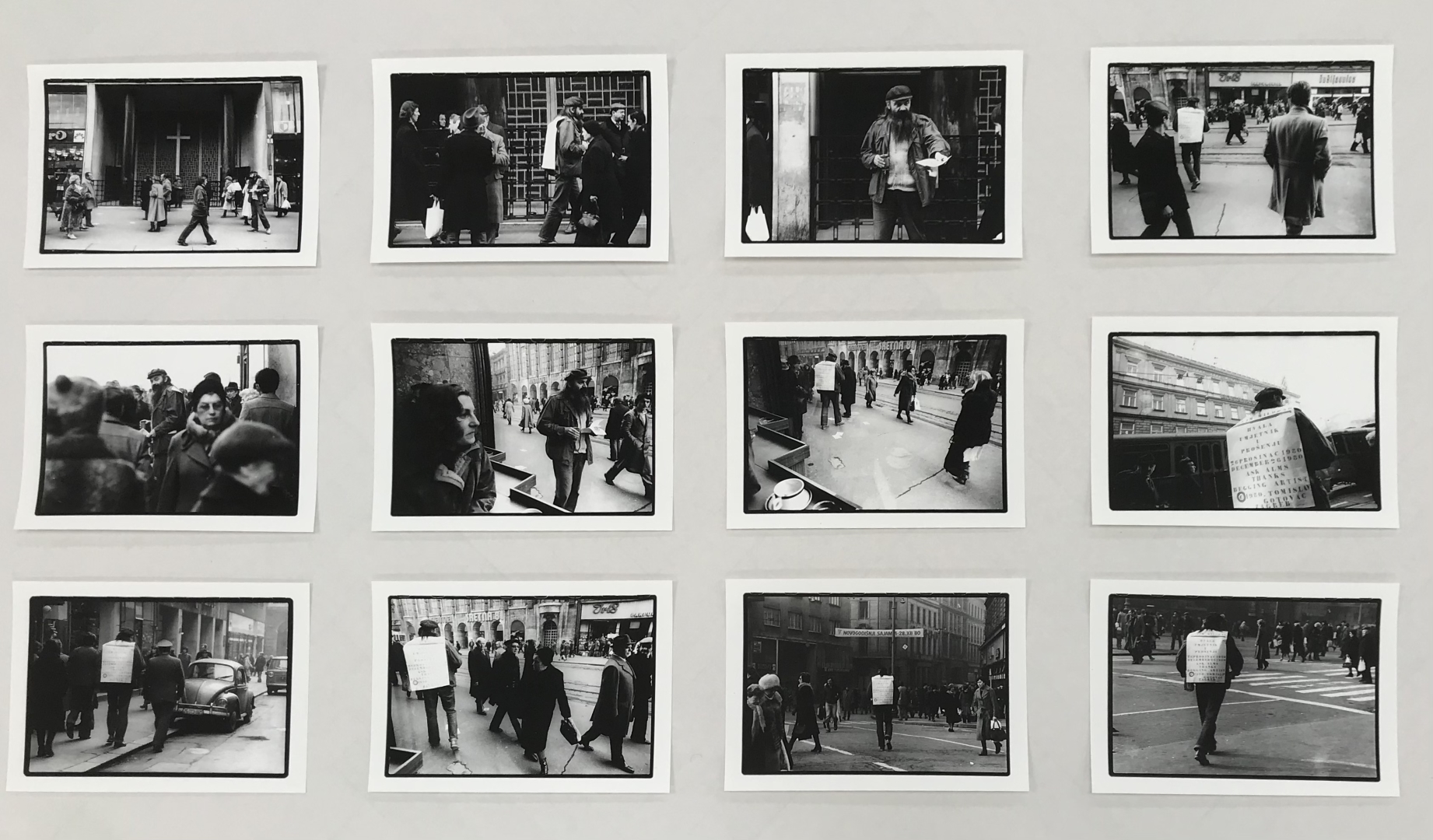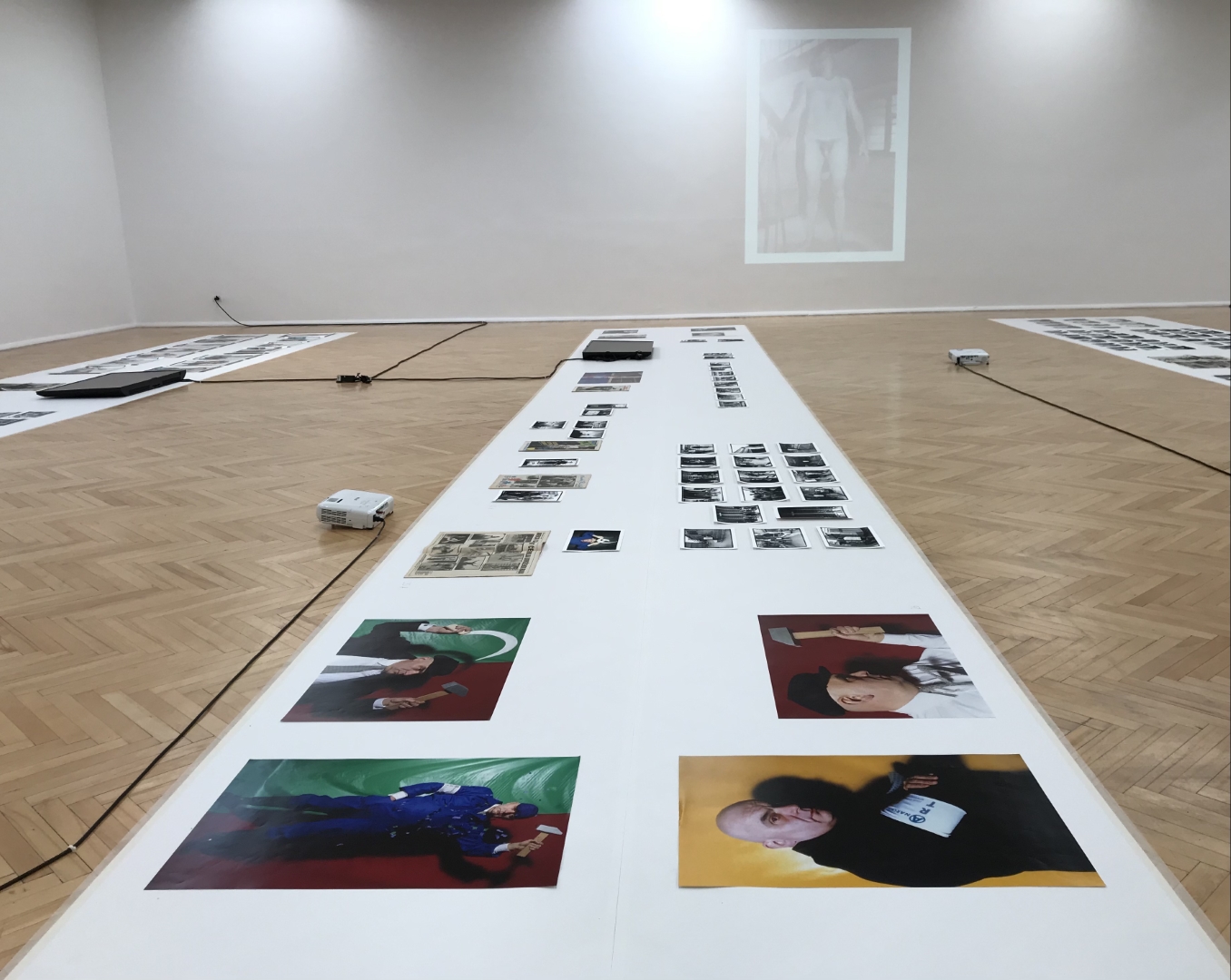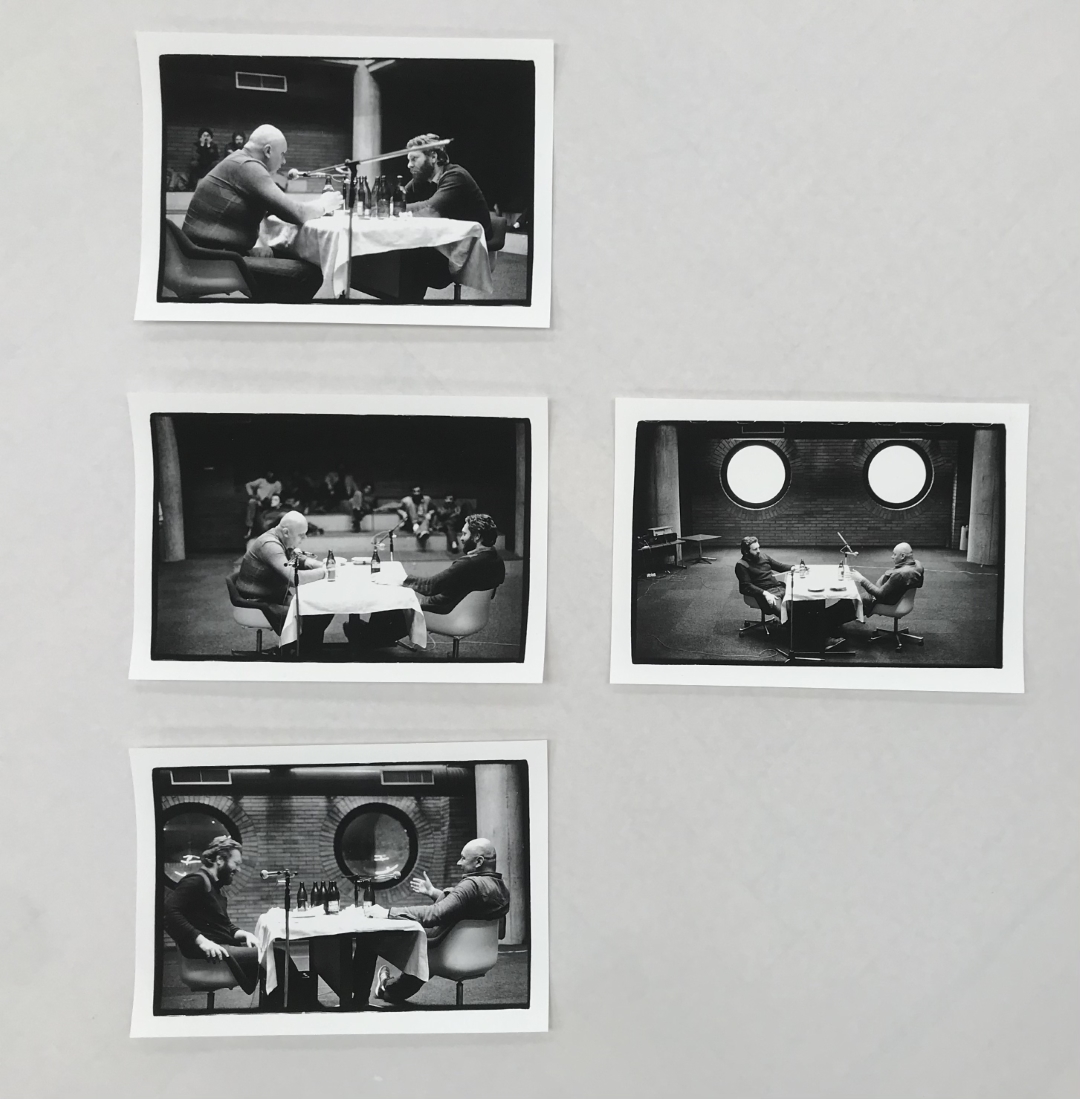The archive project of artist Tomislav Gotovac, curated by Pierre Bal-Blanc, will be displayed at The National Gallery of Arts in Tirana during the period of July 9th to September 9th 2021. The exhibition “The Non-Canonical Gospel According to Tomislav Gotovac** Also Known as Antonio G. Lauer” introduces the visitors to a series from the personal works of the Croatian artist presented through video installations and photography, where the performing acts of the artist and a part of his cinematography over the years are documented.
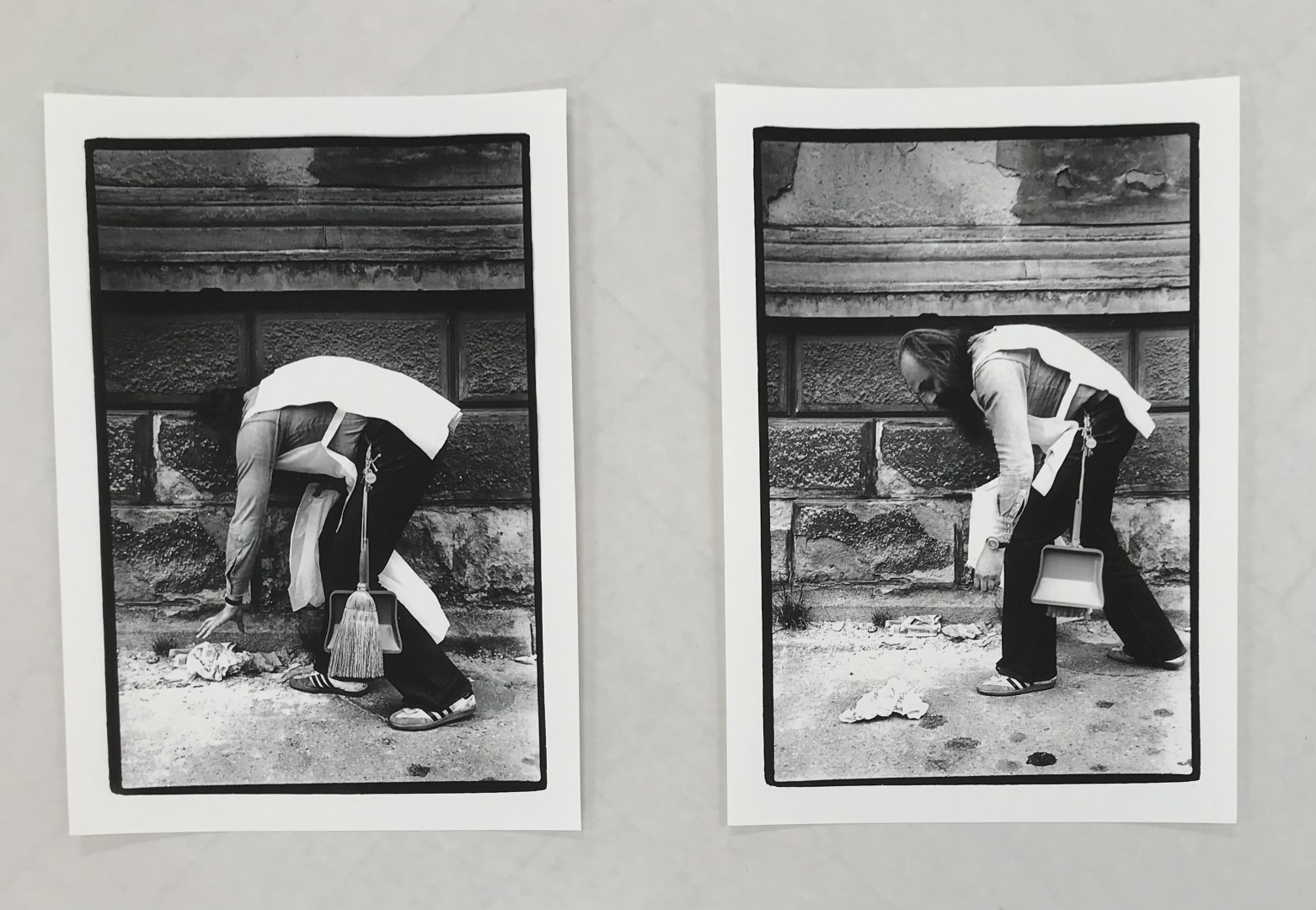
This exhibition seeks to restore the anarchic harmony of Tomislav Gotovac as a figure in transition, perceived as a plan of consistency with multiple intensity variations. The exhibition aims to convey the practice of cinema through other tools that Gotovac developed in live performances at his exhibitions. His works are displayed in the entire space of the second floor of the gallery, respectively in four large white stripes placed on the floor in a horizontal line, accompanied by five monitors.
Instead of politics, Gotovac saw art as a means to change. He marched naked in public spaces, in an attempt to provoke a state built on mass doctrine, thus affirming his difference among harsh social conformity in Yugoslavia. With his performative acts he derides all positions of power, all those who served power and all political and social systems.
On the first stripe placed in the space of NGA some of his public performances are displayed: Showing Elle (1962); Breathing the air (1962); Hands (1964); Suitace (1964); Posing (1964); Homage to Josip Broz Tito (1980-1981); Haircutting and shaving in public space (Homage to Carl Theodore Dreyer) (1981); Conversation (1982). In the same stripe, there is a monitor where four of his short films are shown. Quotes from other artists (Glenn Miller, Duke Ellington, Billy Holiday, Jacques Prévert, Jean-Luc Godard) and tributes to them are an important part of his art. The screened films are: Don’t Ask Where We’re Going (1966) Film, 10’19 “; Glenn Miller 1 (High School Playground 1) (1977) Film, 44’16”; Glenn Miller (2000) Film, 26’16 ”; Documents of time (pornography) (1980).
Another monitor on the second stripe shows two other movies and four performances documented through video this time: S (1966) movie 03’19 “; Ready-made 1 (2000) movie, 03’19”; Homage Tito, Zagreb (1980) performance, 13’23”; Happ Our – Happening, Zagreb (1967) performance, 04’64”; “The Third Key” Zagreb (1983) performance, 05’37 ”; Reading newspaper Daily Mail Amsterdam (1976) performance, 300’12”. Gotovac also further explored self-expression through a series of performances that concentrate on the body and physical transformation. Among them there were other performances: Heads (1970); Integral (1978); Zagreb, I love you! (1981); Talking (Rio Bravo) (1982); Marshal Tito Square, I love you (1997); The Forenoon of the Faun (1963).
Going further, other performances are documented on the third stripe, through which Gotovac wanted to express the social upheaval that prevents society from showing its ugly side: Heads (1960); Begging (Can You Spare Me a Dime? Thank You! The Begging Artist) (1980); Begging (Can You Spare Me a Dime? Thank You! The Begging Artist) (1981); Cleaning of Public Spaces (Homage to Vjekoslav France aka The Bolshevik and Cleaning Apostle) (1981); Superman (1984), Chimney man (selling Polet newspaper) (1984); Death mask (selling Polet newspaper (1984); Mummy (selling Polet newspaper) (1984); Santa Claus (selling Polet newspaper); Street sweeper (selling Polet newspaper) (1984); Sickle, hammer and red star (1986); Masking (1986); Talking (Rio Bravo) Osijek (1982).
In conclusion, the fourth stripe displays the following works: No hear, no see, no speak (Three monkeys) (1979); Speak quietly, but always hold a stick by your leg (1988); Degraffiting (Homage to WolfVostell) (1989); Foxy Mister (2002); Portrait, selling newspaper, actions (1981); Nude (1982); Mummy (selling Polet newspaper) (1984); TG as Grace Jones (1986); Portrait (1988); Jesus Christ on Calvary (2 copies) (1986); The Canaletto View (2020). In this space, two projectors display photographic images on the opposite wall and the one on the right. Also another monitor in the horizontal line presents film sequences and video-performances of the artist: Tomislav Gotovac (1996) film, 01’03”; Watch on the Rhine (2000) film, 01’04”; Cesar Franck WolfVostell (2005) film , 18’59”; Point Blank War Art, Zagreb (1992) Performance, 08’46”; Movement, Staglinec (2009) Performance, 05’58”. Concluding the exhibition, a large monitor shows some more of Gotovac’s cinematographic works.
This retrospective follows the author’s guiding approaches to cinematic and non-cinematic media starting from collages and photographs, to actions and performances in the intimate, public and media space.
*Tomislav Gotovac was born on February 9, 1937 in Sombor and died on June 24, 2010 in Zagreb. During his later years, he changed his name to Antonio Lauer. He was a film director and a conceptual and performance artist, and he created numerous photographic series and collages. Gotovac witnessed the ethnic and economic turbidity of Southern Europe after World War II, until the beginning of the 21st century. Originally an artistic figure of experimental cinema and performance, he became a historical figure in the Balkans who through his works was able to present to the viewer the opportunity to understand the social consequences and cultural implications of geopolitics in this territory and during his time. Gotovac is considered one of the most important Croatian conceptual artists, performers and directors of avant-garde films. He has screened his films and performances all over the world, including: London, Moscow, Berlin, Kyoto, New York, Warsaw, Vienna, Belgrade and Ljubljana.
Some of his cinematic creations are: Death, experimental (1962), S, documentary-experimental, (1966), Plastic Jesus, feature film (1972), Glenn Miller III how the USA defeated Europe, experimental (2000), Remake 2006, experimental (2006). Gotovac also had a series of solo exhibitions entitled: Tomislav®, Gallery of the Student Cultural Center, Belgrade, 1976. Collages 1964, Studio Gallery of Contemporary Art, Zagreb 1979. Twenty Years Before Collages 1964 (II), Space of Extended Media, Zagreb, 1984. Retrospective of Documents (1956-1986), Paranoia View Art, Gallery Društveni dom Trešnjevka, Zagreb, Collages, Exhibition Salon of the JNA House, Zagreb 1988. Collages, Sesame Gallery, Dubrovnik, 1988. Topla voda – collages and films, Bookstore Moderna vremena, Zagreb, 1990. Point Blank, performing graffiti in front of the audience – performance and exhibition, Salon of Karas Gallery, Zagreb, 1992. Installation and Performances, Point Blank Exhibition, Franklin Furnace Archive, New York, 1994.

